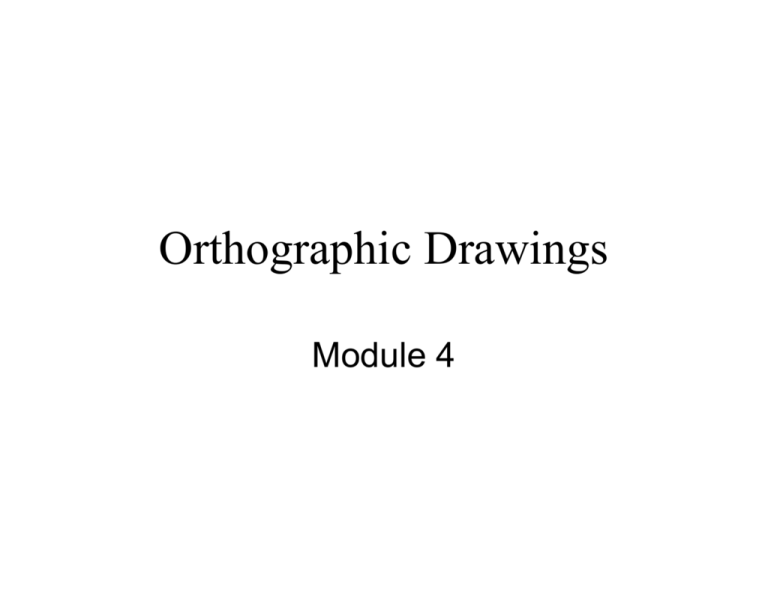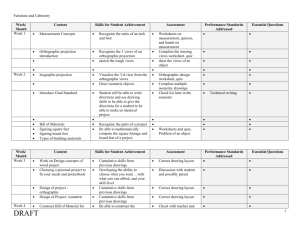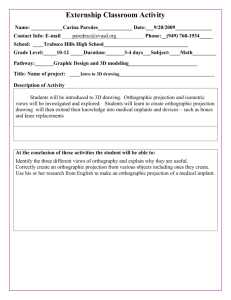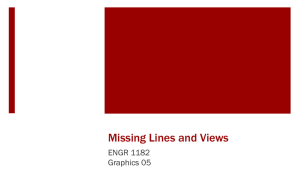Module 4 – Orthographic Projection
advertisement

Orthographic Drawings Module 4 Session Topics ● ● ● ● Orthographic Projection Normal Surfaces Hidden Lines Isometric Sketching from Orthographic Projections Orthographic Projection ● ● Imagine an object is surrounded by a glass cube. The object's surfaces are projected onto the faces of the glass cube. Orthographic Projection ● ● Unfold the cube so that it lies in a single plane Three views of the object are now visible on the same plane in space Fold lines Orthographic Projection When the glass cube is unfolded each view shows two dimensions of the object: • D H • Front view: Height and Width Top view: Width and Depth Right view: Depth and Height D H • W W Orthographic Projection Views are aligned with one another (features project from one view to the next) Orthographic Projection: Normal Surfaces B A Parallel to one of the six glass panes of our transparent cube ● Perpendicular (normal) to the projectors to/from that plane Shown true size and shape in the view that they are parallel to B Edge 3 Seen as edges (lines) Edge 2 in the other principal views Edge 1 Surface A appears as A edge 1 and 4 in top & right views Edge 4 Surface B appears as edges 2 and 3 ● Orthographic Projection: Hidden Lines ● ● ● ● Some object have edges which cannot be seen from certain viewing angles Showing these edges provides valuable graphical information Visible edges are continuous (solid) lines (object lines) Hidden edges are dashed lines (hidden lines) to avoid confusing them with visible edges Orthographic Projection: Hidden Lines Visible Line (Solid lines, can be seen in a given view, aka: Object Lines) Hidden Line (Dashed lines; can't be “seen” in that view) Orthographic Projection: Isometric Sketches from Orthographic Views ● Sometimes you are asked to construct Isometric sketches from Orthographic views to develop visualization skills. ● The box method is one way to do this. ● For some problems, the box method may not be very helpful. Orthographic Projection: Isometric Sketches from Orthographic Views D Find the object's overall dimensions from the orthographic views and sketch that size box on isometric dot paper. H 1. W Orthographic Projection: Isometric Sketches from Orthographic Views 2. Sketch the top, front, and right side views in their appropriate locations on the box. Orthographic Projection: Isometric Sketches from Orthographic Views 3. Add/remove lines until the view is complete. Course Software….. ● Complete the software module on Orthographic Projections Orthographic Drawings Homework … Complete the following pages in Module 4 ortho1-2 5-8 11 - 12 15 - 18 23 - 24





